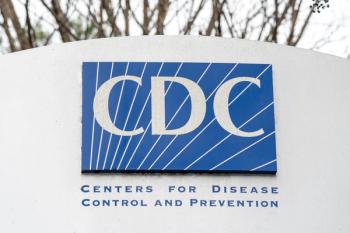
Addictive screen use tied to youth mental health risks
Addictive use of screens—not total time—was linked to higher risks of suicidal behavior and mental health issues in early adolescents.
A large cohort study published in JAMA has found that both high and increasing levels of addictive use of social media, mobile phones, and video games are associated with elevated risks of suicidal behaviors, suicidal ideation, and mental health symptoms in children and adolescents. The findings are based on longitudinal data from the Adolescent Brain Cognitive Development (ABCD) Study and underscore the need for pediatricians to evaluate patterns of screen use in early adolescence.1,2
The study analyzed data from 4,285 participants ages 9 to 10 at baseline who were followed over four years across 21 U.S. sites. Researchers used self-reported validated questionnaires to measure addictive behaviors related to three types of screen use: social media, mobile phones, and video games. Addictive use was defined by indicators such as compulsive use, difficulty disengaging, and emotional distress when not using the platform.
Three distinct trajectories were identified for social media and mobile phone use—low, increasing, and high or high-peaking use—and two for video game use (low and high). Nearly one-third of participants showed increasing addictive use of social media (31.3%) or mobile phones (24.6%) beginning at age 11. Among participants, 47.9% were female, 9.9% were Black, 19.4% were Hispanic, and 58.7% were White.
At the 4-year follow-up, 5.1% of participants reported suicidal behaviors and 17.9% reported suicidal ideation. Youths in the high-peaking or increasing social media use groups had more than double the risk of suicidal behaviors compared with those in the low-use group (risk ratios [RR], 2.39 and 2.14, respectively). These groups also showed elevated risks of suicidal ideation (RR, 1.51 and 1.46, respectively). Internalizing symptoms, such as anxiety and depression, were higher in the increasing trajectory group (mean T-score difference, 1.27), and externalizing symptoms, such as aggression, were higher in both the high-peaking and increasing trajectory groups (T-score differences of 1.25 and 1.05, respectively).
Mobile phone use followed similar patterns. High addictive use of mobile phones was associated with a more than twofold increased risk of suicidal behaviors (RR, 2.17) and a 50% increased risk of suicidal ideation (RR, 1.50). For video games, high-use trajectories were associated with a 54% higher risk of suicidal behaviors (RR, 1.54), 53% higher risk of suicidal ideation (RR, 1.53), and the largest increase in internalizing symptoms (T-score difference, 2.03) among all screen types studied.
Notably, total screen time measured at baseline was not associated with mental health outcomes or suicide-related behaviors, suggesting that the nature and pattern of use, rather than duration alone, may be more relevant to clinical risk.
“These increasing addictive use patterns, which would not have been predicted based on baseline assessments alone, were associated with elevated risks of suicidal behaviors and ideation,” the authors wrote. “This underscores the potential importance of repeated assessment of addictive use of social media and mobile phones among children entering adolescence.”
The study suggests that pediatricians should consider evaluating not just the quantity but also the quality and pattern of screen engagement in children. As the authors note, “High or increasing trajectories of addictive use of social media, mobile phones, or video games were common in early adolescents and were associated with suicide-related and mental health outcomes.”
Given the study’s findings, the researchers suggest that monitoring addictive patterns of screen use could serve as a valuable component in early identification and intervention strategies for youth at risk of mental health challenges.
The study was supported by funding from the National Institute of Mental Health, the American Foundation for Suicide Prevention, and Google.
References:
- Xiao Y, Meng Y, Brown TT, Keyes KM, Mann JJ. Addictive Screen Use Trajectories and Suicidal Behaviors, Suicidal Ideation, and Mental Health in US Youths. JAMA. Published online June 18, 2025. doi:10.1001/jama.2025.7829
- JAMA Network. Addictive screen use trajectories and suicidal behaviors, suicidal ideation, and mental health in US youths. Eurekalert. June 18, 2025. Accessed June 18, 2025. https://www.eurekalert.org/news-releases/1087529?
Newsletter
Access practical, evidence-based guidance to support better care for our youngest patients. Join our email list for the latest clinical updates.







